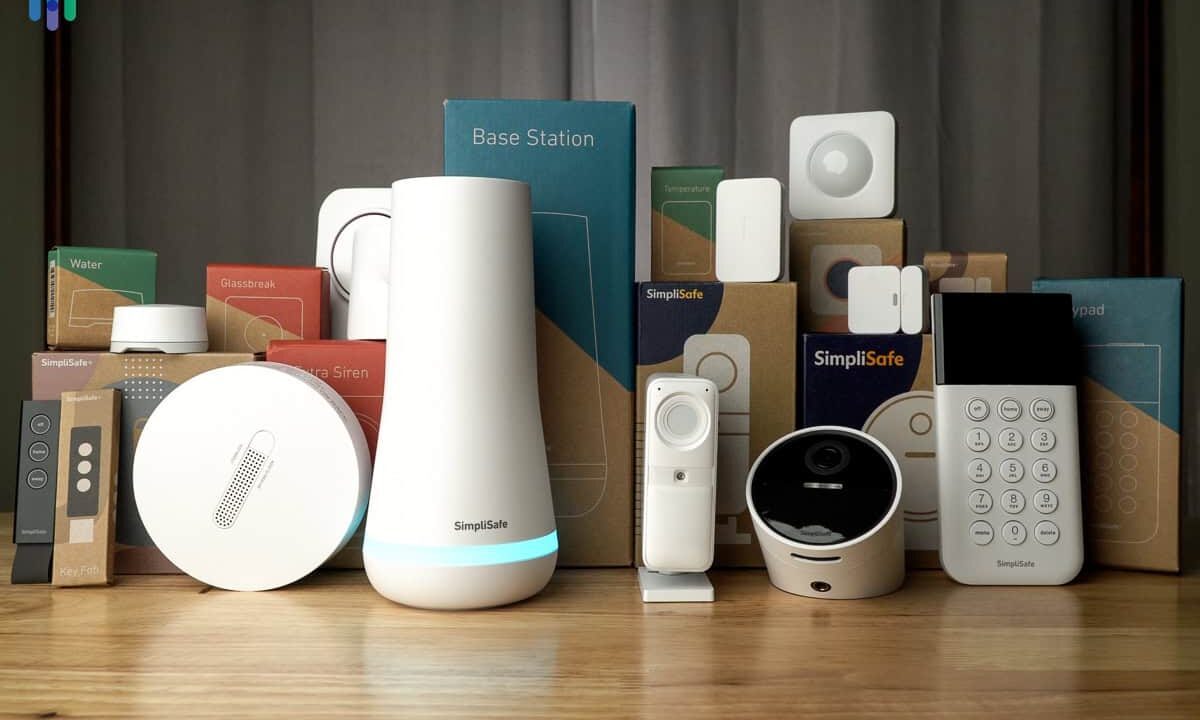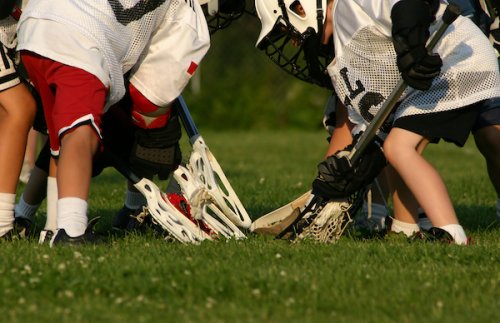When I was a middle school PE teacher, I remember the chaos of the first week of school. Kids were buzzing with excitement, ready to dive into sports, but our equipment closet looked like a tornado had hit it. Half the soccer balls were flat, the basketballs were worn to a slick shine, and don’t get me started on the mismatched flag football belts. It was a wake-up call: quality sports equipment isn’t just nice to have—it’s essential for keeping kids safe, engaged, and active. If you’re a parent, coach, or teacher looking for middle school sports gear, this guide will walk you through where to find the best equipment, what to look for, and how to make smart choices that won’t break the bank.
Why Quality Sports Equipment Matters for Middle Schoolers
Middle school is a pivotal time for kids. They’re discovering their athletic passions, building teamwork skills, and learning the value of staying active. The right equipment ensures safety, boosts confidence, and makes sports fun. Poor-quality gear, on the other hand, can lead to injuries or frustration—imagine a kid tripping over a frayed jump rope or struggling with a deflated soccer ball. Quality gear designed for middle schoolers (typically ages 11–14) is durable, size-appropriate, and supports their growing bodies and skills.
What to Look for in Middle School Sports Equipment
Before diving into where to shop, let’s talk about what makes sports equipment suitable for middle schoolers. The gear needs to be safe, age-appropriate, and versatile enough to handle the rough-and-tumble energy of preteens.
- Durability: Middle schoolers are tough on equipment. Look for gear made from high-quality materials like nylon-wound balls or heavy-duty plastics that can withstand daily use.
- Size Appropriateness: Equipment should match the age group. For example, a size 4 soccer ball is ideal for middle schoolers, while a size 5 is better for high schoolers.
- Safety Features: Protective gear like mouthguards, shin guards, or padded flag football belts should fit securely and meet safety standards.
- Versatility: Multi-use items like cones, beanbags, or jump ropes can be used across various sports and activities, maximizing your budget.
Budget-Friendly vs. Premium Equipment: A Comparison
Choosing between budget and premium gear depends on your needs and resources. Here’s a quick comparison to guide your decision:
| Feature | Budget Equipment | Premium Equipment |
|---|---|---|
| Cost | $5–$20 per item | $20–$100+ per item |
| Durability | Moderate; may need replacing yearly | High; lasts multiple seasons |
| Safety | Basic safety features | Advanced safety features (e.g., padded grips) |
| Best For | Small programs, occasional use | Competitive teams, frequent use |
| Example Brands | Generic brands, local retailers | Gopher Sport, Champion Sports, Mikasa |
Pro Tip: If you’re on a tight budget, prioritize versatile items like playground balls or cones that can be used for multiple sports. Save premium purchases for critical safety gear like helmets or shin guards.
Where to Find Middle School Sports Equipment
Finding the right gear means knowing where to look. Below, I’ve outlined the best places to shop, from online retailers to local stores, with pros and cons for each. Whether you’re outfitting a whole team or just your kid, these options have you covered.
Online Retailers for Sports Equipment
Online shopping offers convenience, variety, and often better prices than brick-and-mortar stores. Here are the top online destinations for middle school sports gear:
Gopher Sport
Gopher Sport specializes in physical education equipment, offering everything from jump ropes to team-building games. Their products are designed with durability in mind, perfect for middle school PE classes. They also provide convenient packs for bulk purchases, saving you time.
Pros: Wide selection, durable products, bulk discounts.
Cons: Shipping costs can add up for small orders.
Wolverine Sports
Wolverine Sports covers a broad range of sports, from basketball to gymnastics. Their flag football belts and protective gear, like lacrosse goggles, are popular for middle school programs. They’ve been in business since 1953, so they know their stuff.
Pros: Affordable, reliable quality, fast shipping.
Cons: Limited customization options for team gear.
School Specialty
School Specialty offers innovative PE equipment, including their Sportime brand, which focuses on physical development. They’re great for unique items like fitness dice or agility rings that keep kids engaged.
Pros: High-quality, educational focus, good for curriculum planning.
Cons: Higher price point for some items.
Net World Sports
For schools needing equipment for sports like soccer, tennis, or cricket, Net World Sports has a massive selection. They offer both individual items and complete sets, ideal for outfitting entire programs.
Pros: Extensive range, fast delivery, suitable for multiple sports.
Cons: International shipping may increase costs for U.S. buyers.
Play It Again Sports
If you’re looking for budget-friendly options, Play It Again Sports sells quality used sports gear. You can find gently used basketballs, soccer cleats, or even hockey sticks at a fraction of the retail price. They also buy back equipment, making it a sustainable choice.
Pros: Cost-effective, eco-friendly, rewards program.
Cons: Inventory varies by location, so selection isn’t guaranteed.
Local Retail Stores
Sometimes, you need gear fast, or you want to see it in person before buying. Local stores can be a great option, especially for last-minute needs.
Dick’s Sporting Goods
Dick’s is a go-to for sports equipment, with a wide selection of middle school-appropriate gear like size 4 soccer balls or adjustable basketball hoops. Many locations carry school spirit merchandise, which is great for team uniforms.
Pros: Wide availability, in-store pickup, frequent sales.
Cons: Prices can be higher than online retailers.
Walmart
Walmart offers budget-friendly sports equipment, from playground balls to basic protective gear. It’s a solid choice for small programs or individual purchases, though the selection may not be as specialized.
Pros: Low prices, easy access, fast pickup options.
Cons: Limited selection of high-end or specialized gear.
Local Sporting Goods Stores
Smaller, local shops often carry unique items and provide personalized service. They may also partner with schools for bulk discounts or custom orders. Check your area for stores like Academy Sports or independent retailers.
Pros: Personalized service, potential for local discounts.
Cons: Smaller inventory compared to big-box stores.
Specialty Storage Solutions
Don’t overlook storage when buying sports equipment. Middle schoolers are notorious for leaving gear scattered, so investing in storage solutions keeps things organized and extends equipment life.
Spacesaver Athletic Solutions
Spacesaver offers high-density mobile storage systems designed for schools. These are perfect for organizing balls, uniforms, and other gear in tight spaces, ensuring quick access during PE classes or practices.
Pros: Space-efficient, durable, customizable.
Cons: Higher initial cost than traditional shelving.
School Outfitters
School Outfitters provides storage carts, ball racks, and athletic lockers tailored for school gyms. Their products are designed to handle the wear and tear of daily use by middle schoolers.
Pros: Comprehensive selection, supports gym organization.
Cons: May require assembly or professional installation.
People Also Ask (PAA)
Here are answers to common questions from Google’s “People Also Ask” section to address search intent:
What Equipment Is Needed for Middle School PE?
Middle school PE programs typically require versatile equipment like playground balls, jump ropes, cones, beanbags, and scooters. Protective gear like shin guards or mouthguards is essential for contact sports. Storage solutions, such as ball carts or racks, keep everything organized.
Where Can I Buy Affordable Sports Equipment for Schools?
Affordable options include Play It Again Sports for used gear, Walmart for budget-friendly basics, and online retailers like Gopher Sport or Wolverine Sports for bulk discounts. Check your school’s bid list for approved vendors to save money.
What Size Sports Equipment Is Best for Middle Schoolers?
Middle schoolers need equipment sized for ages 11–14. For example, use size 4 soccer balls, junior basketballs (size 5 or 6), or youth-sized protective gear. Always check manufacturer guidelines to ensure age-appropriate sizing.
How Can I Ensure Sports Equipment Is Safe?
Choose gear from reputable brands that meet safety standards, like Champion Sports or Mikasa. Inspect equipment regularly for wear and tear, and replace damaged items immediately to prevent injuries.
Tips for Choosing the Right Equipment
As a former PE teacher, I learned a few tricks to make equipment shopping easier. First, always consult your curriculum or team needs to ensure you’re buying gear that aligns with planned activities. For example, if you’re teaching floor hockey, make sure you get sticks sized for middle schoolers—not kindergartners (trust me, I made that mistake once). Second, involve other coaches or PE teachers in your school district for recommendations—they often know which brands hold up best. Finally, consider color-coded equipment for organization. Assigning teams by color (e.g., red balls for one group, blue for another) saves time and reduces chaos.
Pros and Cons of Buying in Bulk
Pros:
- Cost savings on large orders.
- Ensures enough equipment for full classes or teams.
- Streamlines purchasing with pre-curated packs.
Cons:
- Higher upfront cost.
- Risk of overbuying items you don’t need.
- Storage challenges if space is limited.
Maintaining Your Sports Equipment
Proper care extends the life of your gear, saving money in the long run. Clean balls and protective gear regularly with mild soap and water to prevent wear. Store equipment in dry, organized spaces to avoid damage from moisture or clutter. For outdoor gear, invest in weather-resistant items or use seam sealing and patching for minor repairs. My old school had a “gear check” day every month where we’d inspect everything—it caught small issues before they became big problems.
FAQ Section
How much should I spend on middle school sports equipment?
It depends on your needs, but expect to spend $200–$1,000 for a small program or $1,000–$5,000 for a full PE class or team setup. Budget options like Play再度
Where can I donate used sports equipment?
Organizations like Leveling the Playing Field accept used sports gear to distribute to schools and youth programs. Check their website for donation guidelines.
What are the best brands for middle school sports equipment?
Brands like Gopher Sport, Champion Sports, Mikasa, and Sportime offer durable, safe equipment designed for school use. They balance quality and affordability.
How do I know if the equipment is age-appropriate?
Check the manufacturer’s age or size recommendations. For example, size 4 soccer balls and size 5 basketballs are typically ideal for middle schoolers. Consult with coaches or PE teachers for guidance.
Can I buy used sports equipment for schools?
Yes, stores like Play It Again Sports offer quality used gear at lower prices. Ensure the equipment is in good condition and meets safety standards before purchasing.
How can I store sports equipment efficiently?
Use high-density mobile storage systems from Spacesaver or storage carts from School Outfitters to maximize space and keep gear organized. Mesh bags and racks are also great for portability.
Final Thoughts
Outfitting a middle school sports program or your young athlete doesn’t have to be overwhelming. By choosing durable, age-appropriate gear from trusted retailers like Gopher Sport, Wolverine Sports, or local stores like Dick’s, you can ensure kids have safe, fun, and engaging experiences. My days as a PE teacher taught me that the right equipment can turn a chaotic gym class into a memorable, confidence-building moment for a kid. Whether you’re on a tight budget or ready to invest in premium gear, prioritize safety, versatility, and organization. Check out the retailers mentioned above, involve your school community, and keep those soccer balls inflated—your middle schoolers will thank you!





